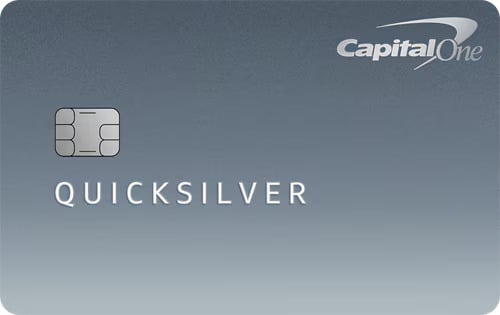5 Things to Know About the AAA Credit Cards
The membership organization AAA offers three co-branded credit cards, whose primary differences are the eligibility requirements, reward structures and sign-up bonuses.

Many or all of the products on this page are from partners who compensate us when you click to or take an action on their website, but this does not influence our evaluations or ratings. Our opinions are our own.
The AAA credit card portfolio requires a little history lesson.
After Bread Financial formally partnered with AAA in 2022, the companies launched two co-branded credit cards: the AAA Travel Advantage Visa Signature Credit Card and the AAA Daily Advantage Visa Signature Credit Card. Both are issued by Comenity Bank, a subsidiary of Bread Financial, and offer solid rewards rates, although earnings are capped.
A third co-branded card, the AAA Cashback credit card, is issued by U.S. Bank.
The Travel Advantage and Daily Advantage credit cards have similar features, but they differ from their Cashback cousin when it comes to eligibility requirements, rewards and sign-up bonus.
Here’s what you need to know about the three AAA credit cards to help you decide the best fit for your lifestyle.
1. There are 3 AAA credit cards
Before applying for one of the AAA credit cards, make sure you’re filling out an application for the card you really want. The three AAA credit cards have different rewards structures:
AAA Daily Advantage credit card.
AAA Travel Advantage credit card.
AAA Cashback credit card.
AAA Daily Advantage credit card
AAA Daily Advantage is billed as a card for everyday spending. And for many cardholders, the rewards categories do represent common spending categories. The Daily Advantage card earns:
5% cash back at grocery stores.
3% cash back on gas and EV charging, wholesale clubs, streaming services, pharmacy and AAA purchases.
1% cash back on all other purchases.
There’s a $500 annual cash-back cap on rewards earned at grocery stores, wholesale clubs and gas stations combined. After hitting the cap, purchases in those categories earn 1% back for the rest of the year. A $500 rewards limit may seem high, but some families will easily exceed it. If you spend $10,000 annually at grocery stores alone, you’d hit the $500 cash-back cap.
AAA Travel Advantage credit card
As the name suggests, AAA Travel Advantage is a travel-centric card, and its rewards categories bear that out. The Travel Advantage card earns:
5% cash back on gas and EV charging.
3% cash back on travel, restaurants, grocery stores and AAA purchases.
1% cash back on all other purchases.
Rewards earned on gas and EV charging are capped at $350 per calendar year. The rewards rate drops to 1% once you’ve hit the limit. Given the 5% rate, cardholders would need to spend $7,000 a year (or about $583.30 per month) on gas and EV charging to reach the $350 rewards cap.
» MORE: Best gas credit cards
AAA Cashback credit card
The rewards rates are less impressive on the AAA Cashback card compared to the other two cards; however, there’s no cap on rewards. This card earns:
3% cash back at grocery stores, gas stations and dining.
2% cash back on AAA memberships, travel and insurance.
1% on everything else.
All three of the AAA cards have a three-tiered reward structure. If you prefer something simpler, consider a flat-rate cash-back card like the Capital One Quicksilver Cash Rewards Credit Card. It earns an unlimited 1.5% cash back on every purchase.
Bread Financial doesn’t allow consumers to have both the Daily Advantage and Travel Advantage cards.
2. You may need AAA membership to get one of the cards
AAA membership is required to get the AAA Cashback credit card. Pricing depends on where you live, but in general, a membership can cost from $38-$164 a year for one person.
However, you don't have to be a member of AAA to apply for the Daily Advantage or the Travel Advantage credit cards.
» MORE: Is AAA worth it?
3. Reward redemption options vary slightly by card
If you have the AAA Cashback Visa, rewards may be redeemed for the following:
AAA gift cards.
Merchandise.
Statement credit ($25 minimum to redeem).
Direct deposit ($25 minimum to redeem).
Gift cards.
The redemption options for the Daily Advantage and Travel Advantage cards include everything listed above plus Apple products and AAA merchandise, services and travel. Cardholders must have at least $5 to redeem if they opt for cash back or a statement credit.
For all three AAA cards, rewards expire after five years.
» LEARN: How to redeem credit card rewards
4. Sign-up bonuses vary by card, too
Currently, the Travel Advantage and Daily Advantage credit cards have the same sign-up bonus: a $100 statement credit for new cardholders who spend $1,000 on their AAA Visa Signature card in the first 90 days of account opening.
As of this writing, the welcome offer for the AAA Cashback card is potentially more valuable, depending on your spending. Instead of the standard 2% rate, new AAA Cashback cardholders will earn 4% on AAA memberships, travel and insurance for the first six months, up to $6,000. Were you to hit the $6,000 spending cap, you’d get $240 cash back.
5. Fees are minimal
None of the AAA credit cards charges annual or foreign transaction fees.
For the Daily Advantage and Travel Advantage cards, the combination of a $0 annual fee and a fixed 5% rewards category is especially notable. Other credit cards that feature a 5% rate often come with an annual fee or require you to actively track and opt in to bonus categories that rotate every quarter.
Find the right credit card for you.
Whether you want to pay less interest or earn more rewards, the right card's out there. Just answer a few questions and we'll narrow the search for you.


